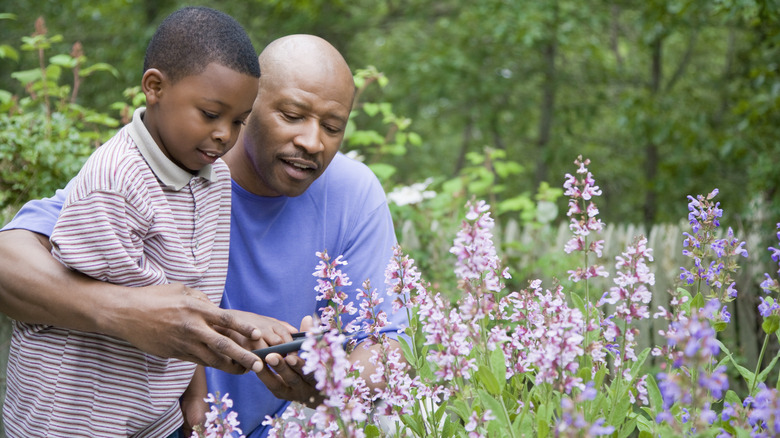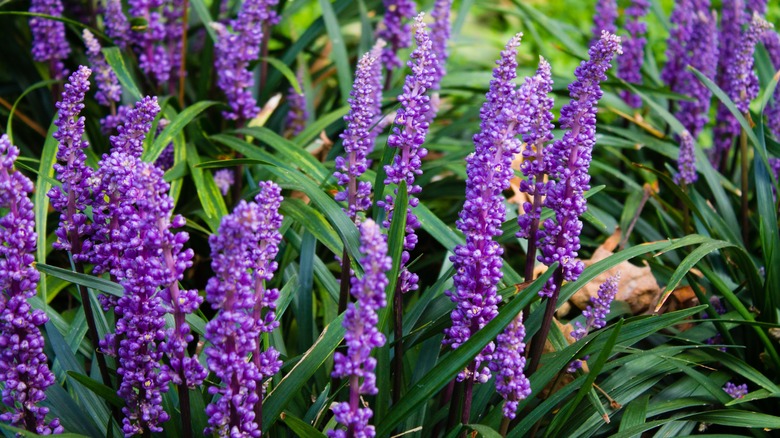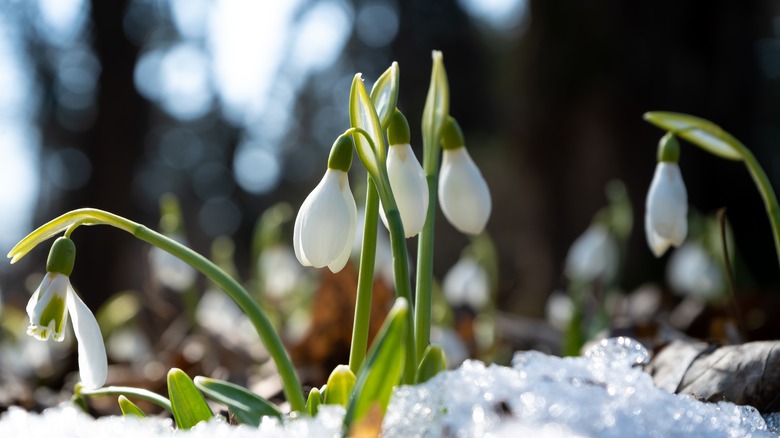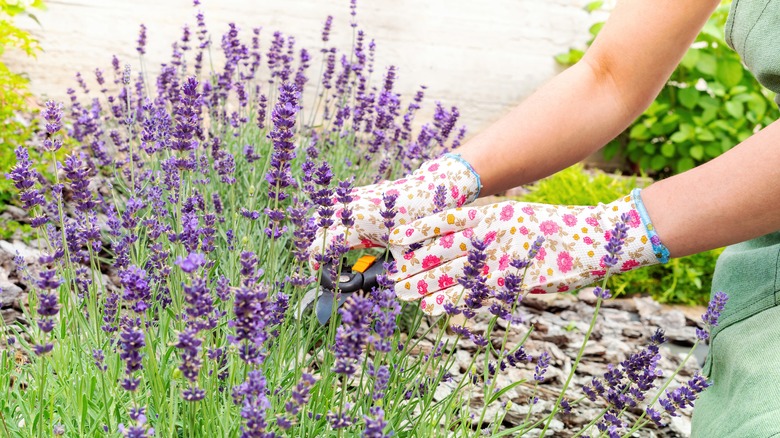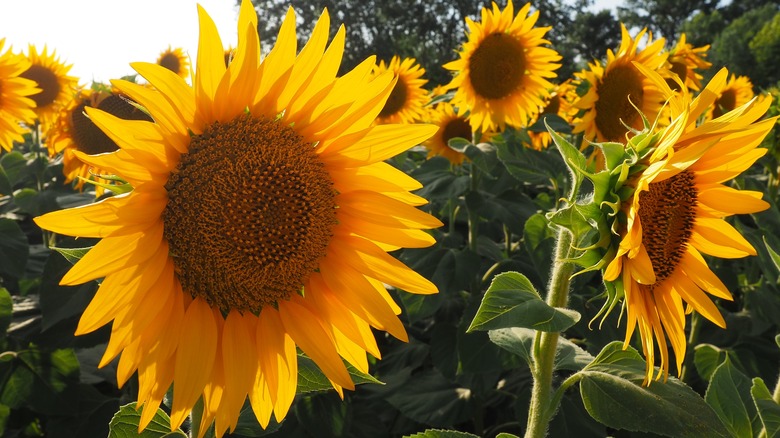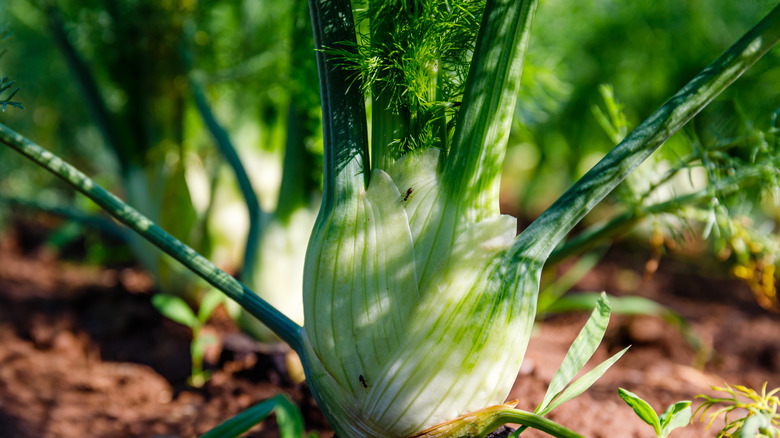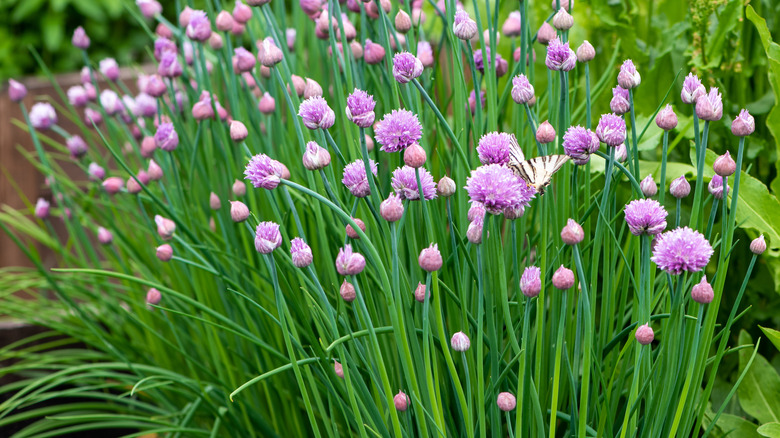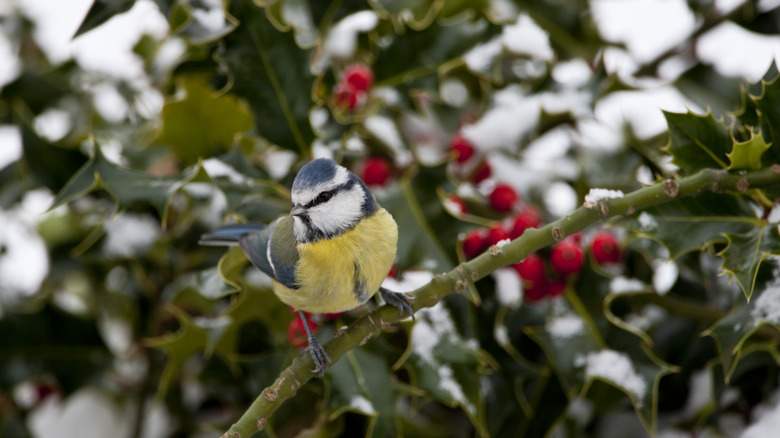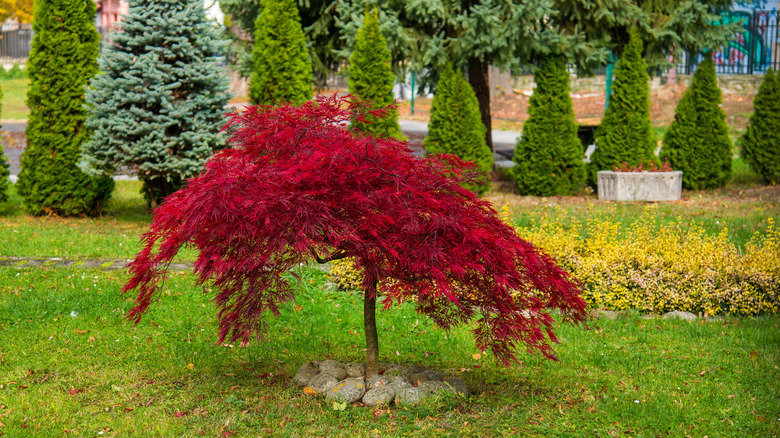Earth-Friendly Plants To Include In Your Climate-Conscious Garden
The mere act of gardening is beneficial to the environment, and for many of us hobbyists that's enough to satisfy our ecological pursuits. If you've clicked open this article, though, you're likely wondering what more you can do to help. You've got the idea of climate-conscious gardening in your head and now it's time to put a plan into action. One way to start is by being mindful of the plants you choose to include in your landscape; at the surface level, that means opting for non-invasive and native species that are most appropriate for your area.
That's all well and good except that the major issues with climate change revolve around the climate ... well, changing. Maybe your region is experiencing unexpected rises in temperatures or flooding after decades of drought, or your neighborhood has fallen victim to high levels of pollution from chemical runoff. For those reasons, you might find yourself looking for plants that can actually help solve a specific problem. That's what we'll focus on here, just keep in mind that this is far from an exhaustive list. We're highlighting a few types of plants to get your creative juices flowing, but your local garden shop, county extension service, and even your neighbors who have seen it all are the people to talk to so you can be sure you're making the best choices for both your needs and those of the environment.
1. Big blue lilyturf
Big blue lilyturf (Liriope muscari) is a good Earth-friendly choice for yards that are flooding and prone to losing soil from erosion. As a ground cover, it protects loose soil from harsh elements like wind, ice, and rain. Unlike most of the usual evergreen creepers, lilyturf is also a visual delight when its purple spikes of flowers spring up in the summertime. Enjoy the blooms but don't eat the berries.
Bloom Season: Summer
USDA Growing Zone: 5 to 10
Growing Conditions: Full sun to partial shade
Soil Type: Clay, loam, or sand; well-draining
Size: 1 to 2 feet tall
2. Snowdrops
An ecosystem would fail to thrive without pollinators, so growing plants that attract them is a wonderful way to up the eco-friendliness of your yard. Snowdrops (Galanthus nivalis) are one of the first flowers to pop up through the thawing landscape. Other early spring options are sand cherries (Prunus × cistena), bleeding hearts (Dicentra spectabilis), peonies (Paeonia lactiflora), and lungworts (Mertensia virginica), which are often called Virginia bluebells.
Bloom Season: Spring
USDA Growing Zone: 3 to 8
Growing Conditions: Full sun to partial shade
Soil Type: Moist but well-draining
Size: 8 to 10 inches tall
3. Lavender
Lavender (Lavandula angustifolia) is a deliciously scented summer bloomer that's loved by pollinators and humans alike. The list of best summer plants for your pollinator garden is long, so you've got plenty more to choose from. Focus on native wildflowers and any plants with brightly colored blooms, particularly orange, yellow, and blue.
Bloom Season: Summer
USDA Growing Zone: 5 to 9
Growing Conditions: Full sun to partial shade
Soil Type: Loam, sand, or shallow and rocky
Size: 1 to 2 feet tall and 2 to 3 feet wide
4. Sunflowers
You can still have a yard full of pollinator-, Earth-friendly flowers as summer rolls into fall. Sunflowers (Helianthus annuus) have been known to bloom well into October, and when they finally finish showing off their oversized blossoms you can collect their seeds to dry for snacks or future flowers. Because they're so tall, sunflowers create shade, which is environmentally beneficial to vegetables that need shelter from harsh sunlight.
Bloom Season: Summer and fall
USDA Growing Zone: 6 to 9
Growing Conditions: Full sun
Soil Type: Sand, loam, or clay; well-draining
Size: Up to 9 feet tall and 1 foot wide
5. Fennel
Fennel (Foeniculum vulgare) is a flowering perennial herb from the carrot family long considered a natural deterrent of aphids, slugs, and snails. It's done such a good job that it's now being scientifically studied for its ability to repel particularly devastating gypsy moths (via Plants). In a nutshell, more fennel in the ground means less pesticide application — a win-win for herb enthusiasts and the environment.
Bloom Season: Summer
USDA Growing Zone: 4 to 9
Growing Conditions: Full sun
Soil Type: Moist but well-draining
Size: 4 to 6 feet tall and 1 to 3 feet wide
6. Alliums
Plants with pungent odors also naturally repel pests and, therefore, allow you to further cut back on your use of chemicals in the garden. This reduces dangerous runoff from residue and keeps the ecology in balance. In the allium family, you'll find onions (Allium cepa), garlic (Allium sativum), leeks (Allium ampeloprasum), shallots (Allium cepa var. aggregatum), and chives (Allium schoenoprasum).
Bloom Season: Spring and summer
USDA Growing Zone: 4 to 10
Growing Conditions: Full sun to partial shade
Soil Type: Moist but well-draining
Size: Varies
7. Edible local berries
Berry bushes are a siren call to all the birds in your region. With birds come more opportunities for pollination, and with berry bushes, you have a chance to grow your own fruit in addition to the vegetables in your patch. From cranberries (Viburnum trilobum) to chokeberries (Aronia arbutifolia) to dogwoods (Cornus stolonifera) and firethorns (Pyrancantha coccinea), with just a little research and some guidance from a local expert, you'll find something appropriate for your yard that everyone will love. Note that cultural conditions for berries will vary depending on the variety you choose.
8. Broadleaf trees
We all know trees are vital to creating a healthy oxygen-rich environment, but there are some that are even better at this than others. Trees that fall into the broadleaf category — species like maple (Acer spp.), ash (Fraxinus spp.), beech (Fagus spp.), and oak (Quercus spp.) — generate photosynthesis at a faster rate than those with needles or scales like conifers. Of course, cultural conditions for broadleaf trees will vary depending on variety, but they don't all require excessive amounts of space. Look for dwarf cultivars if you have a small yard.
